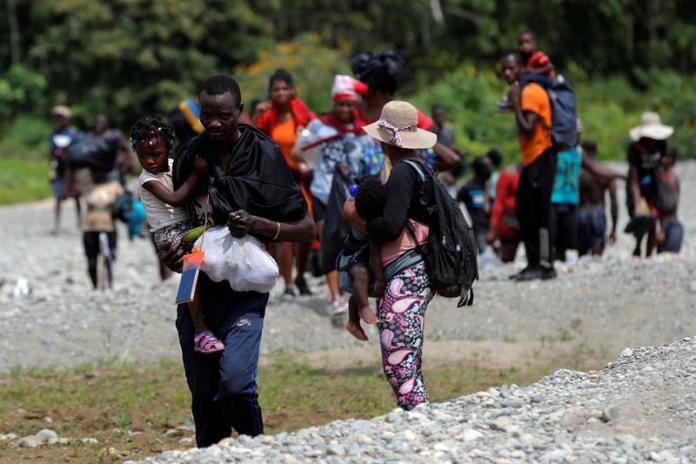RIO DE JANEIRO, BRAZIL – Central America is preparing a protocol to “accompany” in their transit through the isthmus thousands of extra-regional migrants traveling to North America, a flow that has registered a seasonal growth in recent months, say officials of the International Organization for Migration (IOM).
With high levels of poverty and violence, Central American countries face a great challenge in the face of these human movements, especially considering that some of them, such as Honduras and Guatemala, are also nations of origin of migrants seeking to reach North America.

In the first four months of this year alone, 11,370 extra-regional migrants in transit have arrived in Panama, the gateway to the isthmus from South America, according to data from the Panamanian Migration office cited in an interview by the head of the IOM Mission in this country, Santiago Paz.
Given the fact that these migrants do not intend to stay in Central America – which also does not have the conditions to receive them en masse – and the prospect that these flows will not stop, the countries of the isthmus are working on “a series of common coordination”, said Jorge Peraza, head of Mission for the northern Central American countries of the IOM.
Each Central American country has its own regulatory procedures, which can be attributed, for example, to the fact that once the groups of migrants “arrive in the north of Central America, in Guatemala and Honduras, which is the route” they follow, “the flows tend to be faster, which is not necessarily what happens at the Colombia-Panama crossing,” the IOM official explained to Efe.
“A protocol is being finalized that reflects what is this articulation between migration authorities in the region to provide this accompaniment” to this population in mobility, “reduce to the maximum the violation of human rights and particularly combat, to some extent, situations of smuggling of migrants and trafficking in persons,” said Peraza.
Since the beginning of this year, the Central American Commission of Directors of Migration has discussed how to align the “coordination” in this matter, not to slow down but “so that the transit accompaniment takes place in the best human conditions”.
The international official emphasized that already “in the past coordination criteria have been established between migratory authorities”, as is the case of the so-called controlled flow plan, “which is still effective between Panama and Costa Rica, where there is an accompaniment in the transit” of extra-regional migrants.
Panama and Costa Rica implemented in 2016 the “controlled flow” in the face of the unprecedented avalanche of Cuban migrants that reached the isthmus on their journey to the US, which generated a humanitarian crisis in the region.
A NEW WAVE, ESPECIALLY OF HAITIAN MIGRANTS
The head of the IOM Mission for Panama said that the increase in the number of extra-regional migrants that have been observed in recent months is due to a cyclical behavior associated with the dry season that facilitates passage through the dangerous Darien jungle, the natural border between the Central American country and Colombia.
“This is a wave that occurs every year during the dry season, which runs from November of the previous year to April or May of the following year, but over the course of the year, there is a lower number of extra-regional migrants” arriving in Central America, Paz said.
Obviously, in this pattern, there was an “exception in 2020 because of the restriction of movement” across borders due to the covid-19 pandemic, he said.
The majority of this mobile population is of Haitian origin, people who left the Caribbean island after the 2010 earthquake and settled in Brazil and Chile, taking advantage of the strength of those economies, and who are now leaving due to the crisis resulting from the pandemic.
“On their way, they pass through countries such as Peru, Ecuador, and Colombia and reach the Darien jungle, which is not only dangerous because of its vegetation but also because of its hydrographic conditions (…) that is why they look for the dry season (to cross). It is dangerous territory because there is also a lot of illicit business there, such as arms, drugs, and human trafficking,” added Paz.

